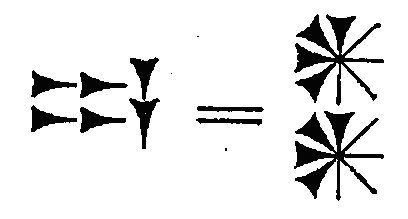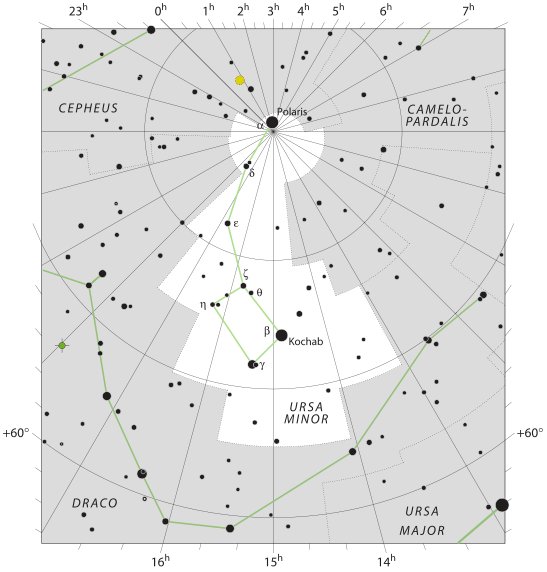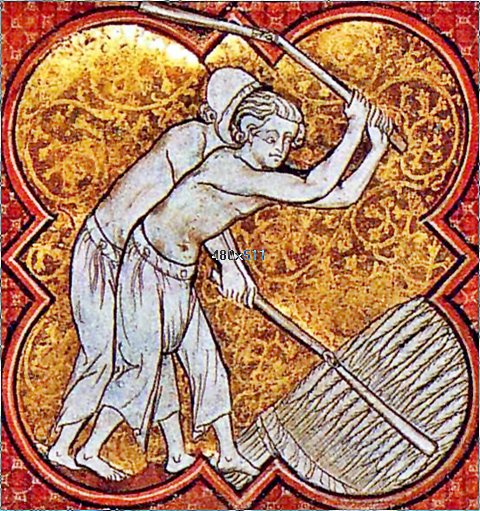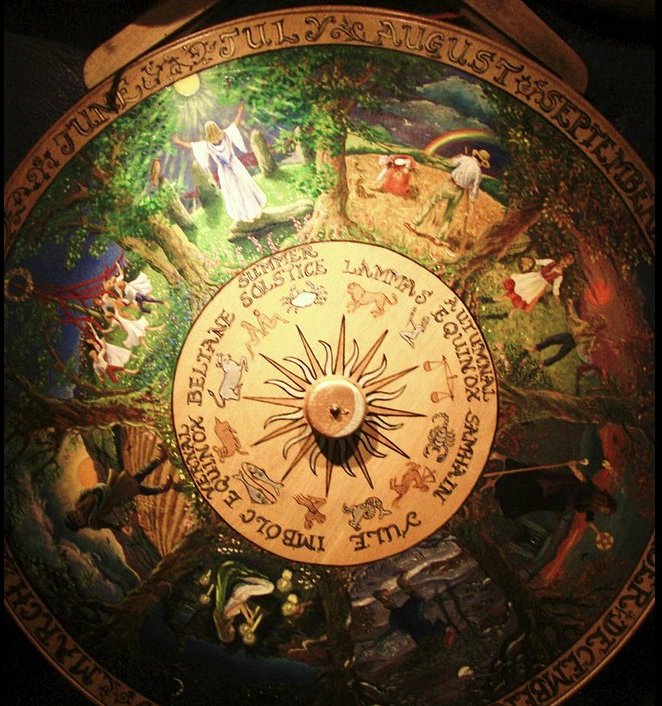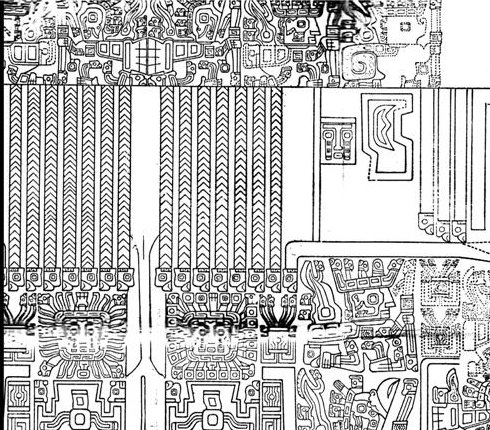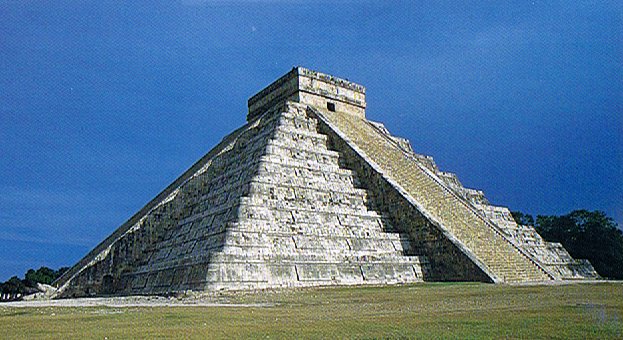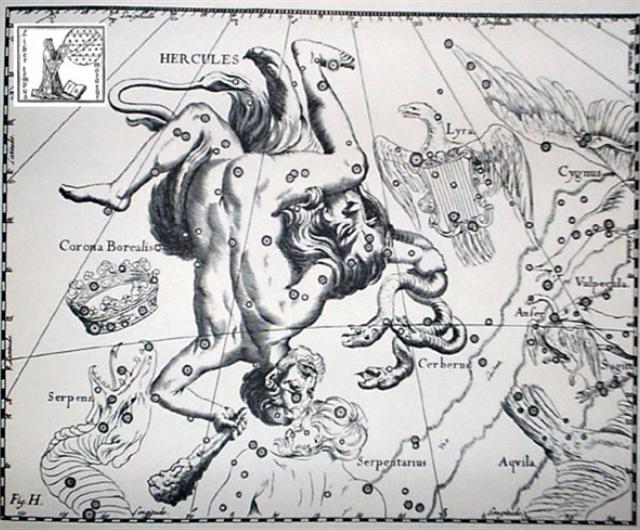201. There were 27 days counting from β Ursae Minoris (Kakkab, the Star)
at the Full Moon up to and including heliacal Aldebaran:
And there were 27 right ascenscion nights to be counted from Sirrah (0h) up to and including Polaris (*26). The anticipated order was here reversed with the point of dawn coming before the star at the pole. ... As has already been mentioned, the Delphians worshipped Dionysus once a year as the new-born child, Liknites, 'the Child in the Harvest Basket', which was a shovel-shaped basket of rush and osier used as a harvest basket, a cradle, a manger, and a winnowing-fan for tossing the grain up into the air against the wind, to separate it from the chaff. The worship of the Divine Child was established in Minoan Crete, its most famous early home in Europe. In 1903, on the site of the temple of Dictaean Zeues - the Zeus who was yearly born in Rhea's cave at Dicte near Cnossos, where Pythagoras spent 'thrice nine hallowed days' of his initiation - was found a Greek hymn which seems to preserve the original Minoan formula in which the gypsum-powdered, sword-dancing Curetes, or tutors, saluted the Child at his birthday feast. In it he is hailed as 'the Cronian one' who comes yearly to Dicte mounted on a sow and escorted by a spirit-throng, and begged for peace and plenty as a reward for their joyful leaps ...
... All the kinsmen spoke to you (i.e. Kuukuu): 'Even you did not prevail against the turtle!' They put the injured Kuukuu on a stretcher and carried him inland. They prepared a soft bed for him in the cave and let him rest there. They stayed there, rested, and lamented the severely injured Kuukuu. Kuukuu said, 'Promise me, my friends, that you will not abandon me!' They all replied, 'We could never abandon you!' They stayed there twenty-seven [27] days in Oromanga. Everytime Kuukuu asked, 'Where are you, friends?' they immediately replied in one voice, 'Here we are!' They all sat down and thought. They had an idea and Ira spoke, 'Hey, you! Bring the round stones (from the shore) and pile them into six heaps of stones!' One of the youths said to Ira, 'Why do we want heaps of stone?' Ira replied, 'So that we can all ask the stones to do something.' They took (the material) for the stone heaps (pipi horeko) and piled up six heaps of stone at the outer edge of the cave. Then they all said to the stone heaps, 'Whenever he calls, whenever he calls for us, let your voices rush (to him) instead of the six (of us) (i.e., the six stone heaps are supposed to be substitutes for the youths). They all drew back to profit (from the deception) (? ki honui) and listened. A short while later, Kuukuu called. As soon as he had asked, 'Where are you?' the voices of the stone heaps replied, 'Here we are!' All (the youths) said, 'Hey, you! That was well done!' ... [E:27-30]
This (the reversed order) seems to reflect the fact that Kochab was on the same side as Ursa Major in contrast to Polaris. ... In the morning of the world, there was nothing but water. The Loon was calling [ragi], and the old man who at that time bore the Raven's name, Nangkilstlas, asked her why. 'The gods are homeless', the Loon replied. 'I'll see to it', said the old man, without moving from the fire in his house on the floor of the sea. Then as the old man continued to lie by his fire, the Raven flew over the sea. The clouds broke ... The gods were homeless. ... it should be remembered that during many milleniums the polar point has gradually been approaching our pole-star, which 2000 years ago was far removed from it, - in Hipparchos' time 12º 24' away according to his own statement quoted by Marinus of Tyre and cited by Ptolemy. Miss Clerke writes as to this: The entire millenium before the Christian era may count for an interregnum as regards Pole-stars. Alpha Draconis had ceased to excercise that office; Alruccabah had not yet assumed it ... Furthermore, number 27 identifies Bharani with Beltane, and *41.4 - *26.6 (Polaris) = *14.8 (→ 148):
With Bharani (point of dawn) following Polaris (star at the pole) this was in the proper order, because according to the rule of ancient east a woman should never go in front of her male. And Kochab was in the day after Bharani. Now then, the mysterious object found in Ur was said to have been dated to around 2500 BC. If correct, we can identify its era with that of the Feathered Serpent - i.e. presumably Draco personified by its leading star (α) Thuban. From Thuban (*212.8) to Wega (*281.8) there were (according to my assumed era for rongorongo) *69.0 right ascension days. But - more to the point (tara) - from the culmination of Thuban in June 7 (158, *78 → 13 * 6) to the line of culmination in August 12 (224, *144 → 24 * 6 → 136 + 110) at Wega in the Lyre constellaltion there were 66 days (→ 366 - 300).
... I must here take the opportunity to document, before it vanishes from my memory, how scientists (according to a TV program I happened to stumble on yesterday) had found out that the 91 vertical stone segments clearly had been arranged in order to produce a remarkable acoustical phenomenon - viz. how someone (like a priest) when clapping his hands standing on the ground in front of the pyramid would receive an echo of approval from the stones, sounding exactly like the chirp of the Flying Serpent (the Quetzal Coatl, Kukulkan) ...
... the great high priest and monarch of the Golden Age in the Toltec city of Tula, the City of the Sun, in ancient Mexico, whose name, Quetzalcoatl, has been read to mean both 'the Feathered Serpent' and 'the Admirable Twin', and who was fair of face and white of beard, was the teacher of the arts to the people of pre-Columbian America, originator of the calendar, and their giver of maize ...  The culmination of Thuban in June 7 coincided with where the Sun was bound to rise at Rigel according to my assumed era for rongorongo: ... In view of the almost universal prevalence of the Pleiades year throughout the Polynesian area it is surprising to find that in the South Island and certain parts of the North Island of New Zealand and in the neighboring Chatham Islands, the year began with the new Moon after the early morning rising, not of the Pleiades, but of the star Rigel in Orion ...
And the culmination line at Wega in the night of August 12 preceded the night when according to the era of Bharani our present world had been created, viz. when the Sun had risen together with Kakkab Nammax in "January 1 with the Full Moon ideally at Ukdah.
The culmination of Sirius was at the opposite side of the year compared to the culmination line at Wega.
|
||||||||||||||||||||||||||||||||||||||||||||||||||||||||||||||||||||||||||||||||||||||||||||||||||||||||||||||||||||||||||||||||||||||||||||||||||||||||||||||||||||||||||||||||||||||||||||||||||||||||||||||||||||||||||||||||||||||||||||||||||||||||||||||||||||||||||||||||||||
